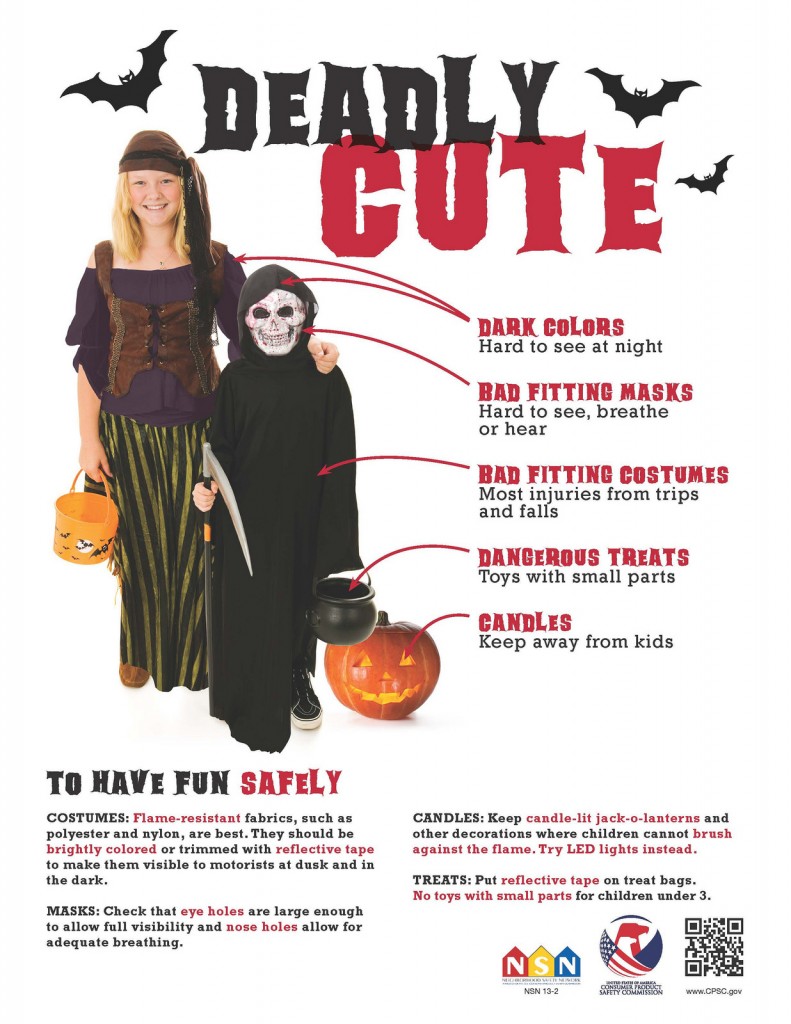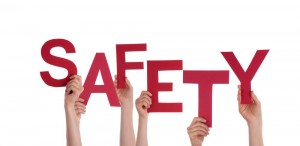 Did you know that there are approximately 3,500 Halloween related injuries reported annually between October and November? Incidents involve burns from jack-o’-lanterns, lacerations from pumpkin-carving, falls related to ill-fitting costumes, and injuries from collisions due to impaired vision.
Did you know that there are approximately 3,500 Halloween related injuries reported annually between October and November? Incidents involve burns from jack-o’-lanterns, lacerations from pumpkin-carving, falls related to ill-fitting costumes, and injuries from collisions due to impaired vision.
The following are some ideas for consideration to eliminate hazards:
Decorations:
- Outside your home, use flameless candles or keep burning candles and jack-o’-lanterns away from landings and doorsteps or anywhere trick-or-treaters’ costumes could brush against the flame.
- Remove obstacles from lawns, steps, and porches for trick-or-treaters.
- When indoors, keep candles and jack-o’-lanterns away from curtains, decorations, and items that could ignite.
Costumes:
- When purchasing costumes, masks, beards, and wigs, look for flame-resistant fabrics, such as nylon or polyester; look for a “Flame Resistant” label. Flame-resistant fabrics will resist burning and extinguish quickly.
- Purchase costumes that are brightly colored and clearly visible to motorists.
- For greater visibility, decorate or trim costumes and treat bags with reflective tape that will glow in the beam of a car’s headlights.
- Children should carry flashlights to be able to see and be seen.
- To guard against trips and falls, costumes should not drag on the ground.
- Tie hats and scarves securely to prevent them from slipping over children’s eyes and obstructing vision.
- If your child wears a mask, make sure it fits securely, provides adequate ventilation, and has holes large enough to allow full vision.
Be wise, follow these tips to eliminate hazards and enjoy a safe and happy Halloween.


 As consumers, do we understand what is safety? Senseless safety slogans such as “be careful,” “drive safely,” or “safety is common sense” have become the safety philosophy of the United States.
As consumers, do we understand what is safety? Senseless safety slogans such as “be careful,” “drive safely,” or “safety is common sense” have become the safety philosophy of the United States.